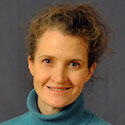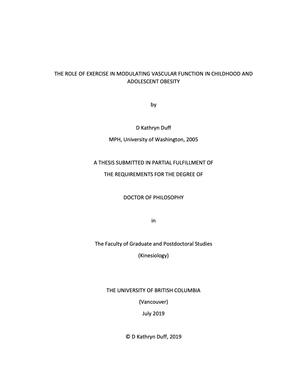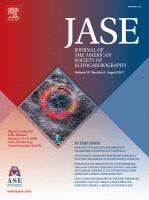Duff, Kathryn D.
Person Preferred Name
Kathryn Duff
Position
Faculty Member
Department
Status
retired
Affiliation Date
1993 to 2021
Education and Credentials
BPE (University of British Columbia)
MPH (University of Washington)
PhD in Kinesiology (University of British Columbia)
Retired Douglas College Faculty.
BPE (University of British Columbia)
MPH (University of Washington)
PhD in Kinesiology (University of British Columbia)
Retired Douglas College Faculty.
Related Works
Content type
Digital Document
Abstract
Purpose: Overweight children and adolescents have increased aortic stiffness conferring an increased risk of future cardiovascular events. This thesis evaluated exercise training as a means to modify aortic stiffness in obese youth. An institutional treadmill protocol (British Columbia Children’s Hospital, BCCH) for assessing metabolic gas exchange parameters (minute ventilation, tidal volume, breathing frequency, oxygen consumption, carbon dioxide production) was validated using a healthy cohort (study 1, Chapter 3). This protocol was used to test obese children and adolescents before and after an exercise intervention. Echocardiography was used to study changes to vascular properties pre- and post- training (study 2, Chapter 4). Pulmonary function tests were used to assess lung function pre- and post- training (study 3, Chapter 5). Study 1: A scaled institutional (BCCH) protocol was validated using 70 healthy boys and girls. This validated protocol was used in the subsequent training study to individually adjust intensity to V̇O2 capacity, in keeping with exercise intervention recommendations. Study 2: Ten to 18 year old children and adolescents (BMI ≥ 97th percentile for age) were recruited to undergo a 12-week exercise program in a randomized cross-over study. Standard echocardiographic dimensions and measures of systolic and diastolic cardiac function were recorded before and after both a 12-week exercise intervention and 12-week control phase. Biophysical properties of the aorta including pulsewave velocity were calculated using an echocardiographic-Doppler method. Treadmill exercise tests were also performed before and after each study phase. Study 3: The same participants that underwent the exercise training in study 2 were measured for resting pulmonary function and exercise spirometry as per the protocol described in the second study. Results: The institutional treadmill protocol produced similar peak exercises responses compared to the traditional protocol and was validated as an alternate for pediatric exercise testing. Ten participants completed the exercise intervention (age 14.3+3.2 yrs). Training showed a significant reduction in PWV (p=0.003), a modest reduction in body mass (p=0.0135), and exercise tolerance improved (METs, p=0.003; total exercise time, p=0.015). A reduction of aortic pulsewave velocity can be achieved with exercise training in obese children and adolescents and cardiovascular fitness can be modestly improved.
Origin Information
Content type
Digital Document
Abstract
Background
Patients with anorexia nervosa (AN) have altered physiologic responses to exercise. The aim of this study was to investigate exercise capacity and ventricular function during exercise in adolescent patients with AN.
Methods
Sixty-six adolescent female patients with AN and 21 adolescent female control subjects who exercised to volitional fatigue on a semisupine ergometer, using an incremental step protocol of 20 W every 3 min, were retrospectively studied. Heart rate, blood pressure, and echocardiographic Doppler indices were measured at rest and during each stage of exercise. Fractional shortening, rate-corrected mean velocity of circumferential fiber shortening, stress at peak systole, cardiac output, and cardiac index were calculated. Minute ventilation, oxygen consumption, carbon dioxide production, and respiratory exchange ratio were measured using open-circuit spirometry.
Results
Patients with AN had significantly lower body mass index (16.7 vs 19.7 kg/m2, P < .001), total work (1,126 vs 1,914 J/kg, P < .001), and test duration (13.8 vs 20.8 min, P < .001) compared with control subjects. Peak minute ventilation, oxygen consumption, and carbon dioxide production were significantly decreased in patients with AN. Heart rate, systolic blood pressure, cardiac index, fractional shortening, and rate-corrected mean velocity of circumferential fiber shortening demonstrated similar patterns of increase with progressive exercise between groups but were decreased at peak exercise in patients with AN. Body mass index percentile, age, peak oxygen consumption, and peak cardiac output were independently associated with exercise duration.
Conclusions
Adolescent patients with AN have reduced exercise capacity and peak cardiovascular indices compared with control subjects but normal patterns of cardiovascular response during progressive exercise. Systolic ventricular function is maintained during exercise in adolescents with AN.
Origin Information
Content type
Digital Document
Abstract
Background
Stress echocardiography has been advocated for the detection of abnormal myocardial function and unmasking diminished myocardial reserve in pediatric patients. The aim of this study was to create a simplified index of myocardial reserve, derived from the myocardial inotropic response to peak semisupine exercise in healthy children, and illustrate its applicability in a sample of pediatric oncology patients.
Methods
In this prospective analysis, children (7–18 years of age) with normal cardiac structure and function performed semisupine stress echocardiography to volitional fatigue. The quotient of wall stress at peak systole and heart rate–corrected velocity of circumferential fiber shortening were calculated at baseline and at peak exercise, the difference of which was termed the index of myocardial reserve (IMR). The IMR was also calculated in a retrospective sample of pediatric oncology patients with normal resting left ventricular function who had received anthracycline treatment and had performed the same exercise protocol to illustrate utility.
Results
Fifty healthy subjects (mean age, 13.2 ± 2.6 years) and 33 oncology patients (mean age, 12.7 ± 4.0 years) were assessed. In the healthy children at peak exercise, heart rate–corrected velocity of circumferential fiber shortening significantly increased (from 1.17 ± 0.17 to 1.58 ± 0.24 circ · sec−1, P < .001), while the quotient of wall stress at peak systole significantly decreased (from 75.3 ± 17.1 to 55.3 ± 13.8 g · cm−2, P < .001), shifting the plot of the relationship between the two parameters upward and to the left. The mean IMR was −30.8 ± 17.8, and the normal distribution ranged from −4.7 (fifth percentile) to −67.3 (95th percentile). The IMR was abnormal in 10 oncology patients who were treated with anthracyclines.
Conclusions
The authors have developed a novel IMR. Relative to the normal distribution of this IMR in healthy subjects, it is possible to identify patients with abnormal myocardial reserve. Thus, this study demonstrates the application of the IMR to aid in clinical decision making in individual patients.
Origin Information
Content type
Digital Document
Abstract
Background: Exercise testing in children is widely recommended for a number of clinical and prescriptive reasons. Many institutions continue to use the Bruce protocol for treadmill testing; however, with its incremental changes in speed and grade, it has challenges for practical application in children. We have developed a novel institutional protocol (British Columbia Children's Hospital (BCCH)), which may have better utility in paediatric populations.
Aim: To determine if our institutional protocol yields similar peak responses in minute ventilation (VE), oxygen consumption (VO 2 ), carbon dioxide production (VCO 2 ), respiratory exchange ratio (RER), metabolic equivalents (METS) and heart rate (HR) when compared with the traditional Bruce protocol.
Methods: On two different occasions, 70 children (boys=33; girls=37) aged 10-18 years completed an exercise test on a treadmill using each of the protocols. During each test, metabolic gas exchange parameters were measured. HR was monitored continuously during exercise using an HR monitor.
Results: Physiological variables were similar between the two protocols (median (IQR); r s ): VE (L/min) (BCCH=96.7 (72.0-110.2); Bruce=99.2 (75.6-120.0); r s =0.95), peak VO 2 (mL/min) (BCCH=2897 (2342-3807); Bruce=2901 (2427-3654); r s =0.94) and METS (BCCH=16.2 (14.8-17.7); Bruce=16.4 (14.7-17.9); r s =0.89). RERs were similar (BCCH=1.00 (0.96-1.02); Bruce=1.03 (0.99-1.07); r s =0.48). Total exercise time (in seconds) was longer for the BCCH protocol: BCCH=915 (829-1005); Bruce=810 (750-919); r s =0.67.
Conclusion: The BCCH protocol produces similar peak exercise responses to the Bruce protocol and provides an alternative for clinical exercise testing in children.
Origin Information





